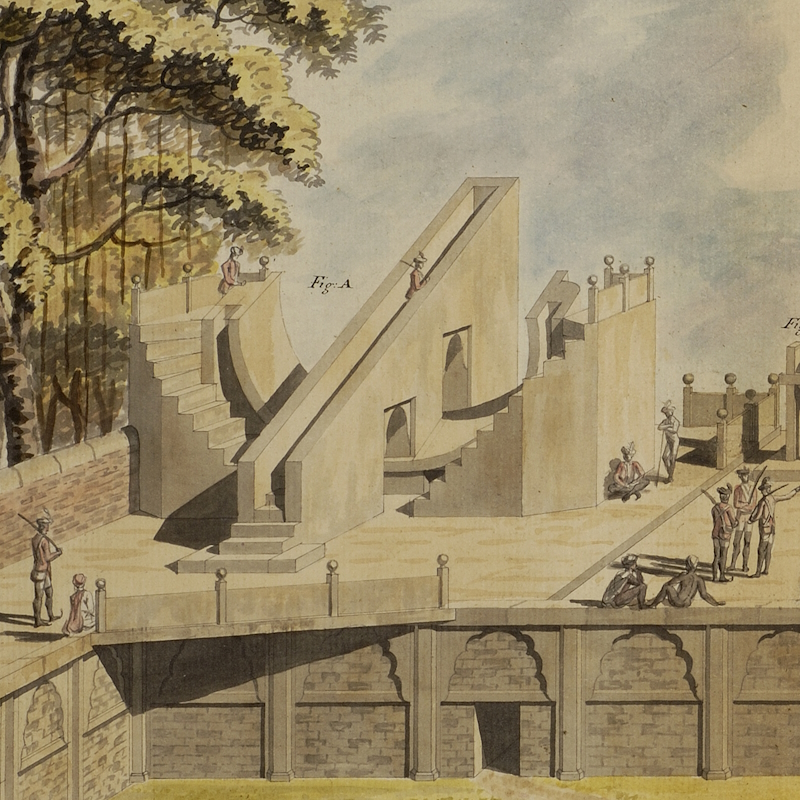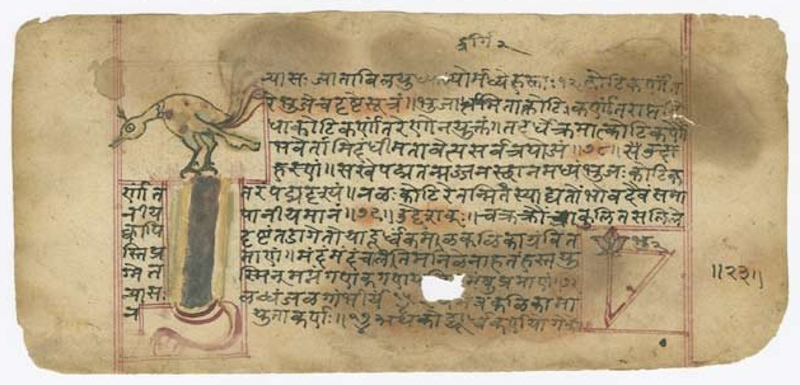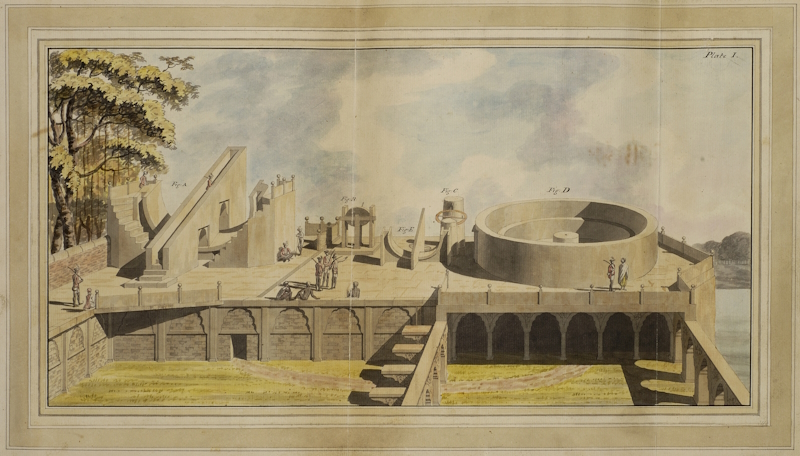While putting together a new Google Arts & Culture exhibition dedicated to India, Louisiane Ferlier discovers how Indian science has been a consistent thread throughout the Royal Society’s collections.

As a historian interested in the development of algebra in seventeenth-century England, I’ve always taken it for granted that India was the place of origin of some of the most fundamental scientific concepts. From zero and square roots through to the decimal system, Indian mathematicians laid the ground for modern maths as far back as 1200 BCE.
 1650 manuscript from the Lilavati of Bhaskara II (1114-1185), from the Plimpton-Smith collection at Columbia University
1650 manuscript from the Lilavati of Bhaskara II (1114-1185), from the Plimpton-Smith collection at Columbia University
While putting together a Google Arts & Culture exhibition dedicated to India, which I’m delighted to launch today, I found Indian science to be a consistent thread throughout the Royal Society’s collections. The contribution of Indian scientists can be traced through our archives in all branches of science, and India endures as a place of inspiration, fascination and exploration for Fellows over the centuries.
The colonisation of the Indian subcontinent, under the aegis of the East India Company and then of the British Crown during the Raj, shaped scientific exchanges in complex ways. I recommend the work of Deepak Kumar of the Indian National Institute of Science as a first port of call to understand the links between colonialism and science in India. Certainly, the colonial exploration of India was the background for the earliest British communications to the Royal Society, and scholars such as R W Home have examined the Royal Society's involvement in imperial science.
Scientific enquiries were officially sent through the East India Company on 22 January 1662, not much more than a year after the Royal Society was founded. In response, Robert Moray and Daniel Colwall reported a few months later on refrigeration methods in Tamil Nadu and Andhra Pradesh and on the soporific effects of a plant from the coast of Malabar.
Over the centuries, many letters and publications commented on India’s natural wonders and listed the scientific advances made there. The story that has captivated me most is that of the Jantar Mantars, or assemblies of astronomical instruments made of stone, which demonstrate the extraordinary advances in Indian astronomy in the eighteenth century. They situate India as a place of science capable of building innovative infrastructure to support an ambitious programme of scientific investigation.
 Jantar Mantar, Varanasi (L&P/6/248)
Jantar Mantar, Varanasi (L&P/6/248)
In 1777, the Commander in Chief of the British Forces in Bengal, Robert Barker, relayed to the Royal Society the existence of a large complex of stone astronomical instruments in Benares, modern-day Varanasi:
‘a number of Instruments yet remaining in the greatest preservation; stupenduously [sic] large, immovable from the spot and built of stone, some of them upwards of Twenty foot in height; and although they are said to have been erected Two Hundred years, the graduations and divisions on the several Arcs appeared as well cut and as accurately divided as if they had been the performance of a modern Artist. The execution in the construction of these Instruments, exhibited a Mathematical exactness.'
Barker had also commissioned the chief engineer for the East India Company and future colonial governor of Madras, Georgia and Jamaica, Archibald Campbell, to provide large watercolour sketches of the instruments.
Barker’s account, though it recognises the scientific prowess required to build the structures and rightfully sees them as a manifestation of the advancement of astronomical knowledge in India, is riddled with the inconsistencies that are born from colonial prejudice. His theory that the observatory was more than 200 years old likely arose because the palace on top of which the observatory was built did indeed date back to the 1600s, but it also betrays the same inability to understand historical layers in the Indian context that Pratik Chakrabati observed in his recent masterful publication, Inscriptions of nature.
The signs of ‘greatest preservation’ Barker could see were in fact a testament to the fact that Varanasi’s Jantar Mantar had been completed only 35 years prior to his visit. Had Barker consulted local astronomers he would have been able to report on the names and uses of the instruments, as John Lloyd Williams would later do, and testify to the recent advances brought by the synthesis of Islamic, Hindu and western traditions of astronomy. The complex was in fact instigated by Sawai Raja Jai Singh (1688-1743), the ruler of the Kingdom of Amber, who broke from the Mughal Empire. Sawai Jai Singh, under the tutelage of astronomer Jagannātha Samrāṭ (1652–1744), promoted Sanskrit learning widely and spearheaded the construction of astronomical observatories, not only in Varanasi but also in Jaipur (which obtained UNESCO World Heritage status in 2010), Delhi, Ujjain and Mathura.
The decision to build the instruments out of stone is unique and indicates a fascinating vision of astronomy. The Jantar Mantars provide stable markers which facilitate comparison and reproduction of observations over time, though positioning and sweeping to specific vistas is limited. Additionally, by building five observation sites, Sawai Jai Singh enabled the cross-referencing of observations essential to modern astronomy.
While Barker’s account is the most widely known, it was expanded upon in 1792 by the aforementioned John Lloyd Williams, whose paper was also printed in the Philosophical Transactions of the Royal Society and is, to my mind, a much more useful record. It includes Arabic and Hindu variant names for the instruments, provides accurate measurements, and gives an account of the use of the instruments based on the knowledge of local astronomers educated in the newly founded College of Benares. Williams was guided by his friend, the local magistrate Ali Ibrahim Khan.
The Varanasi site fell into disuse in the nineteenth century under British rule, but was restored in 1911 by Gokul Chand Bhavan, astronomer to the Maharaja Sawai Madho Singh. It has been managed as a heritage site by the Archaeological Survey of India since the 1950s. The digital view of the Jaipur site included in our exhibit gives a further glimpse of the incredible structures, and you can find more here.
Our digital exhibit will give you a much broader overview of how India shines as a place of science in our archives, including the stories of our first Indian Fellows, Ardaseer Cursetjee (1808-1877), Srinivasa Ramanujan (1887-1920) and Sir C V Raman (1888-1970). By focusing on the Jantar Mantar observatories, I hope I have conveyed a couple of points in particular. The first is the incredible wealth of scientific history in India, and the second is the possibility of looking beyond the biased contemporary accounts in the archives of the Royal Society, complicated by the colonial narrative, in order to reveal the contributions of people like Ali Ibrahim Khan or Gokul Chand Bhavan, whose names do appear if we look under the surface. I hope therefore that this exhibition serves as an invitation to historians of science to collaborate with the Royal Society and uncover more of these stories, while the Society continues to strengthen its scientific partnerships with Indian institutions more widely for the future.

